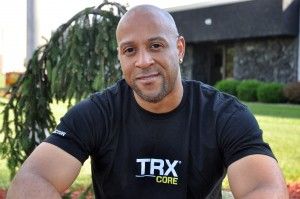On 3/25, ACE convened a panel of seasoned fitness leaders to present Expert Insights on How to Deliver an Online Exercise Session: One-to-one and Group.
Were you able to join live? If not, don't worry. We recapped the key points here to give you a cheat sheet on how deliver effective and engaging online exercise sessions. Watch the live panel in its entirety here.
Expert Insights on How to Deliver an Online Exercise Session
In this unprecedented time of work and social disruption, personal trainers and group fitness instructors are adapting quickly, turning to virtual settings to provide exercise and coaching guidance to clients. In the live webinar, ACE’s panel of online-exercise experts recommended best practices and tips to create an engaging virtual workout that leaves clients wanting more. Overall, our experts’ recommendations can be summed up into three topics: Connect with Your Clients, Bring Your A-Game and Take Advantage of New Opportunities.
Connect with Your Clients
As increased households find themselves in quarantine, you may be the only person your clients get to connect with during the day. Use your virtual exercise sessions to provide your clients with a great workout and social connection. Below are some tips to get started:
- ACKNOWLEDGE THE TIMES: This is an unprecedented period where clients who used to respond right away may now be taking time to figure out their new normal. Shana Verstegen, fitness expert, recommends not being too pushy on sales; instead, check-in with clients, share what you are offering, share options for clients and allow individuals the space to identify what works best for them. As clients engage in your virtual sessions, stay flexible and play with new variables that were not present at in-person sessions. For example, Michael Piercy of The LAB shared that he has complimented his client’s rug or invited his client’s child to join the workout as appropriate. Also, don’t feel like you need to jump into the workout right away; take a moment to connect with your client. Finally, check-in on the client’s goal; it may have shifted since COVID-19 began.
- SOCIAL INTERACTION and ENCOURAGEMENT: Provide space in your exercise program for social interaction and encouragement. In group sessions, this may mean letting participants chat with each other before the workout starts; creating friendly competitions; and asking clients to count off. In addition, don’t assume participants will feel a connection just because they attend the session. Anthony Wall of ACE compares this experience to attending a party but not talking to anyone; many people were at the party, but you may not have felt a connection with anyone. To maintain a sense of connection, use clients’ names to cheer on or help them with their form (e.g., “Great push-up, Lindsey!”). Overall, let participants embrace the experience.
- CUES: Unlike in-person sessions, you may need to modify your cues to best support your client in a virtual session. Use visual cues such as demonstrating a movement if your client will be able to clearly see you on their screen. In addition, Anthony strongly recommends using visualization cues to help enhance the experience (e.g., “Imagine stepping over a tree stump”), and Shana suggests using positive cues. This means staying away from negative statements like “Don’t bend your knee,” and instead, making cues such as “Think about keeping your knees aligned over your toes.” In this way, cues will help you facilitate strong from while simultaneously connecting with your client.
Bring Your A-Game
All panelists recommended coming to your virtual sessions prepared; bring your A-Game to keep clients engaged and excited for future workouts. Consider the following when preparing for your virtual sessions:
- EQUIPMENT: What equipment and space will your client(s) have access to during the online exercise session? Use this information to design your program. If your client doesn’t have a specific piece of equipment, modify the exercise program so it includes existing equipment or does not require equipment. It’s also important to determine the amount of space your client has available to safely exercise. Temporarily moving furniture or pulling a car out of a garage may provide increased space so clients can safely perform the full range of exercises in your program.
- VIDEO PLATFORM: Which video platform will you use? What settings will you need to be familiar with? It’s important to identify and test the video platform you will be using prior to the session and understand which settings you’ll use during exercises and where to update your program to ensure a great client experience. For example, to prevent the main video image from switching to the individual talking the loudest, put your group participants on mute during workout instructions. In addition, Shana recommends testing your online workout with friends and colleagues first so you are not troubleshooting during your client’s time.
- VIRTUAL VISABILITY: How will you and your clients see the session? Consider how you will be filming and monitoring your session. Michael recommends using a laptop or tablet, whose larger screens allow you to see your clients better. It’s also important to understand where your camera is and what it can view. For instance, if your camera will not capture ground-based exercises without a camera adjustment, consider removing ground exercises from the workout session. In addition, you may need to start off by demonstrating a move then getting closer to your screen to watch your clients’ form. Similarly, determine what devices clients will use to view the workout. Clients on a phone may have a harder time seeing visual demonstrations due to a small screen.
- PROGRAM DESIGN: Can an in-person exercise program be adapted for online workouts? Yes, the panelists agree, with modifications. For example, running for 10 minutes may not be possible due to space, plus your client’s attention span may be different without you physically present. A workout program composed of short sets may be better suited to keep your client engaged. Michael also recommends to always consider the client’s experience; change the exercise program to maintain client motivation.
Take Advantage of New Opportunities
During this unique time, new opportunities may be present to support your clients, expand your cliental, and enhance your expertise. For instance, the following opportunities may be available for your:
- CLIENT – Take advantage of this time to go back to the basics and refocus on fundamental movements with your client. This is particularly attractive if your client has limited equipment available. With improved technique, your client will be in a better position and ready to return to your in-person sessions
- NEW CLIENTS – This is the perfect environment to engage individuals who were interested in your in-person sessions but never showed up. For example, Michael shares a story of a client who always tried to get her husband to join her in-person workouts. Then, at a recent virtual workout, Michael and the client were able to encourage the husband to join in on a couple of sets. Perhaps some potential customers never came in due to time or travel; this is a great time to explore what you have to offer online.
- BUSINESS – This is your time. Use it to enhance your expertise through professional development and show off your personality and dedication to your work and the success of your clients. Michael strongly recommends virtual instructors to play to their strengths as individuals who connect with their clients. Unlike highly produced, pre-programed exercise recordings, you have an opportunity to personalize your workouts for clients, connect with clients during the workout and motivate clients to keep going so they can reach their goals; recordings don’t and can’t provide this. But you can – shine!
More Resources
- ACE’s COVID-19 Webpage- Find additional ACE-specific COVID-19 content here, including special equipment discounts to share with clients for virtual sessions.
- Legal and Insurance Issues in the Time of COVID-19 – Review liability and insurance considerations for exercise professionals and health coaches providing virtual sessions.
- ACE Online Courses – Use this time to enhance your skills and expertise with online ACE education opportunities.
Have questions?
Reach out to us on social media to join the discussion and connect with other professionals:
- Facebook (@ACEfitness)
- Twitter (@ACEfitness)
- Instagram (@ACEfitness)
The ACE Panel of Experts

Anthony Wall
ACE Director of International Business Development
As the Director of International Business Development for the American Council on Exercise (ACE), Anthony Wall, MS, oversees all ACE’s international strategy including partnership development and implementation support to vocational education and academic institutions around the world. Mr. Wall serves as a member of the Physical Activity Innovative Collaborative of the National Academies of Medicine and as Education Committee member for the Medical Fitness Association. He recently completed a 2-year term as a SPRI Education Advisor.

Michael Piercy
Owner and Founder of The LAB
Michael is the owner-founder of The LAB, which provides a mobile online training program. The Lab – Mobile online training program is completely customizable and offers participants access to the LAB’s fitness dashboard to track progress and success. Michael is a member of the Under Armour training team and a TRX Master Course Instructor and Global Presenter. Michael is the recipient of two of the most prestigious awards in the fitness industry the 2017 IDEA Personal Trainer of The Year Award as well as 2013 TRX Overall Instructor of the Year award (F.A.C.E.U.P) given by his peers and colleagues for a great attitude, community spirit, and inspirational teaching.

Shana Verstegen
ACE Master Trainer
Shana is a Master Trainer for the American Council on Exercise (ACE) and a Master Instructor for TRX Training, and has years of experience as Fitness Director/Personal Trainer/Group Exercise Instructor at Supreme Health and Fitness in Madison. She is a 6-time world champion women’s professional log roller and boom runner. Shana has been featured in national media outlets such as the Wall Street Journal and CNN for her fitness achievements and as a national spokesperson for the Huntington’s Disease Society of America.




 by
by 









 by
by